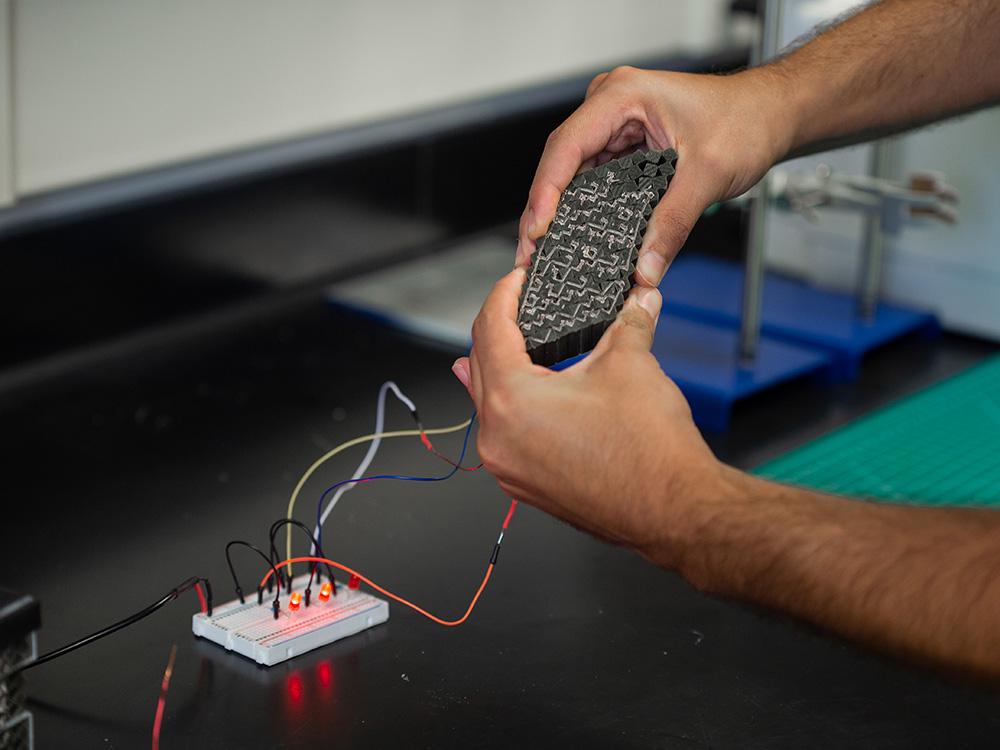Penn State and U.S Air Force researchers have engineered a novel material that can now ‘think’
 Credit: Kelby Hochreither/Penn State
Credit: Kelby Hochreither/Penn State
Unlike native integrated circuits, these mechanical integrated circuits act like their own integrated circuit that can sense, think, and act on what’s happening around them.
It is interesting how they successfully managed to grasp the external stimuli, process it and generate the required output.
“The soft, conductive mechanical material contains reconfigurable circuits that can realize combinational logic: when the material receives external stimuli, it translates the input into electrical information that is then processed to create output signals.”
Harne and his team also demonstrated a method to use mechanical force to compute complex arthmetic, or detect radio frequencies to communicate specific light signals, among other potential translation examples. “The possibilities are expansive,” Harne said, because integrated circuits can be programmed to do so much.
They discovered a method to use mathematics and kinematics to realise a fundamental form of intelligence in engineering materials by utilising fully scalable information processing intrinsic to soft material systems.
Their goal is to develop a material that demonstrates autonomous navigation through an environment by seeing signs, following them, and manoeuvring out of the way of adverse mechanical force, such as something stepping on it.